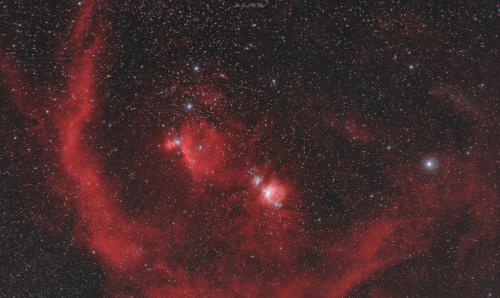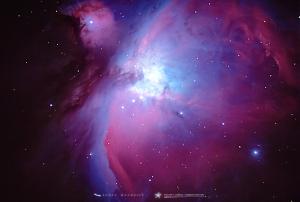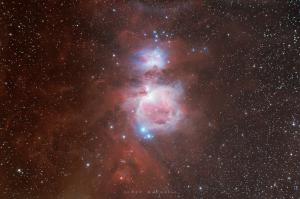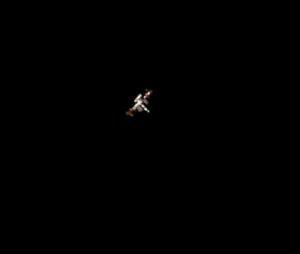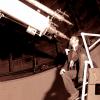Celebration of Space - January 21, 2022
On Monday, January 24, 2022, the James Webb Space Telescope (JWST) will arrive at its orbital destination, the second Lagrange point (L2), which is just under 1 million miles beyond the Moon. At 2:00 pm EST James Webb will fire its thrusters, inserting the observatory into orbit around the Sun. At this location the JWST will assume a local halo orbit at L2. This step is the third and final mid-course correction thrust maneuver. These maneuvers are very important because they will allow the observatory to ease into the L2 position. If only the thrust of the launch vehicle (the Ariane rocket) was used, the observatory could not properly slow down at L2 without exposing the telescope’s optics to direct sunlight, which are currently shielded via the large deployed sunshade. Exposure would overheat these components, rendering the observatory unusable. NASA will host a live question and answer session about the milestone completion, which can be watched on the NASA Science Live website. Keep up with the progress of the James Webb Space Telescope.
Residents of the Northeast often experience a lapse in memory regarding winter, specifically that it actually happens in New England every year. As such, we often think of winter in a negative context. Well we can either sit by the heater and cry about early sunsets, closed beaches, and frozen toes; or we can bundle up, embrace the cold, and see all the amazing things winter time has to offer. And what better way to celebrate the darker and colder side of the year, than with a mesmerizing view of the vast Orion Nebula in a large telescope under super dark sky conditions.
Residing in the constellation Orion, the Orion Nebula is the closest site of massive star formation to the Solar System. At a distance of around 1,400 light years, the nebula spans about 25 light years in diameter. Inside the wisps of hydrogen gas and star light, thousands of infant stars are just taking shape with unformed planetary systems about to set out on their own evolutionary story. The nebula is naked eye visible as the middle star in Orion's sword.
During this time of the winter, the Orion Nebula is above the horizon after sunset, and will reach its highest point in our sky just after 9:00 pm, which is due south. When observing without the presence of the Moon or light pollution, the views are truly spectacular. Aside from the Orion Nebula, the constellation Orion has dozens of fabulous objects to view, from dense multiple star systems, to fantastic nebulae that make up the Orion Molecular Cloud Complex.
Check out our gallery of Diffuse Nebulae, which includes several images of the Orion Nebula captured by our Astronomy Team members. Now that the Moon is departing the evening sky, it’s a fantastic time to catch a view of the Orion Nebula.
This past week, the International Space Station (ISS) returned to the evening sky over the United States, offering up spectacular passes over our region during the late afternoon hours. Evening passes continue through this week and will persist until February 6, 2022. At Frosty Drew we consider evening passes, especially during the wintertime, to be family friendly. This is because all evening passes will happen between 5:00 pm and 7:00 pm, making it easy to step outside with the family to catch a view. The alternative is either before sunrise in the morning, late at night during the summer, or not at all. Here are some notable passes of the ISS over our region for the coming weekend:
Fri, Jan 21 at 5:39 pm, starting in the WSW, rising to 58°, heading towards the NE and into orbital sunset
Sat, Jan 22 at 6:29 pm, starting in the WNW, rising to 21°, and into orbital sunset
Sun, Jan 23 at 5:41 pm, starting in the W, rising to 27°, heading towards the NE
For daily pass times of the ISS and other bright satellites over our region, visit the Frosty Drew Daily Satellite Pass Prediction Utility every day. Now bundle up and step out this weekend to catch sight of the International Space Station passing overhead, and remind yourself that humans are residing up there.
The Frosty Drew Memorial Fund Board of Directors will host the annual meeting of the members on Tuesday, February 22, 2022 at 4:30 pm. It was proposed to host the meeting at 2:22 pm, which would make the date and time 2022.2.22 at 2:22 but that time-slot didn’t work out.
- Author:
- Scott MacNeill
- Entry Date:
- Jan 21, 2022
- Published Under:
- Scott MacNeill's Columns

